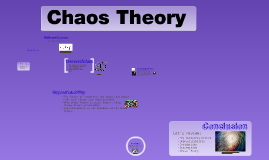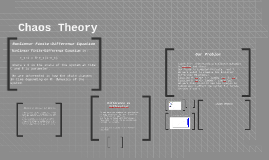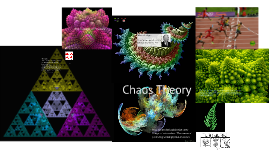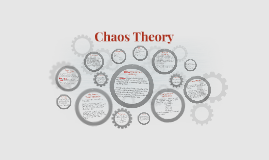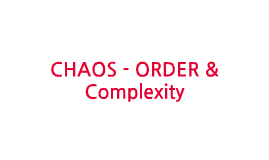Chaos Theory
Transcript: Like crisis theory, chaos theory does not have a set intervention, rather it can be used to guide thinking in conjunction with other theories. Particularly with narrative theory. Questions pertaining to the nature of the chaos and what positives and creativity could stem from it should be asked. It is important to be aware of patterns (fractals) and realize the importance of small changes (the butterfly effect). This has been shown to work well with individuals, groups, and companies. Chaos theory is on the rise in the world of child welfare, because in these cases tension and chaos are rampant and entropy is more present than order, so this theory could have major implications for that area of practice. The theory is not completely developed; thus more information is needed before it can be used to its full potential. It will be difficult to evaluate the effectiveness of the theory as it expects people to remain in chaos and suggests that goals and objectives are not going to measure change. Creativity Works With: Systems Theory Person-in-Environment Crisis Theory Brief Treatment Narrative Weber's Organization of Offices Problems are a result of humans desire for structure in an unstructured world, the attempt to organize our lives into neat boxes, the desire for predictability, and the aspect of human nature that desires to view situations in black and white rather than in shades of grey. History of the Theory Chaos theory is a fairly new theory and it is still in the development process. It's creation was encouraged by: the computer age, finical crises, organizational restructuring, and the desire for knowledge. Prigogine and Stenger began the creation of the theory in 1984 by questioning the concepts of Thermodynamics and Weber's "organization of offices." The theory was added to by Lorenz (1963) and Mandelbrot (1983) at a later date. Chaos emerges from tension that stems from the evolving, erratic, and complex situations that we experience (i.e. life). On the bounds of this tension is the margin of chaos. Remember, from chaos comes creativity; therefore, tension breeds creativity, and is not inherently negative. Common Themes and Principles Creating Chaos Macro: has implications for management practice for organizations. How Problems Arise: Micro: can be used to empower clients; help them find strengths, creativity, and new beginnings in times of unpredictability or chaos. Theoretical Concepts: Surmises that creativity results from chaos; therefore, chaos is not inherently negative. A self organizing system will have an energy flow that allows for the existence of dualities. These dualities are the simultaneous existence of paradoxical states including: order and disorder and complexity and simplicity. Chaos Theory Fractals: expose the geometric nature of chaos; a mathematical concept that explains that things happen in patterns on all levels. It is important to be able to point out these fractals. The Butterfly Effect: can be described as a sensitive dependence on initial conditions; meaning that even a minor change can make a massive difference elsewhere. Non-linearity Numerous parts with no casual relationships A network of feedback (communication) loops Unpredictability Flow of energy towards self organization Dualities: open and closed systems, order and disorder, complexity and simplicity, etc. Implications: Humans: can be viewed as a complex system that exists in the realm of other complex systems (whole part theory) and we are in a constant feedback loop with these other systems. Change is a direct component of creativity that results from chaos. Works Against: Structural Structural Family Medical Model Bureaucracy A concept based in physics discovered by Isaac Newton in 1687. States that: (1) matter cannot be created or destroyed, (2) entropy in a system not in equilibrium will increase, and (3) the entropy of a system approaches a common value as the temperature approaches absolute zero. In layman's terms: entropy is the measure of disorganization in a system, so this theory suggests that nothing can be created or destroyed, disorder does not decrease, and the longer a system is not in equilibrium the system will become more disorderly. Chaos theory can be used on all levels of social work practice: Mezzo: use with interdisciplinary teams: frequent impromptu meetings should spur creativity and solutions. Chaos Theory Criticisms: Intervention: The Law of Thermodynamics Chaos theory suggests that creativity will allow people to come up with new answers. These answers do not necessarily have to be in a result to a problem, rather they can be a new way of looking at the world. In terms of problem solving creativity will allow for unique solutions to a person's specific problems. Creativity is enhanced through spontaneous meetings of the minds, the ability to adapt to and thrive under chaos, and the ability to work through tension. The two previous concepts share a few concepts believed to be






